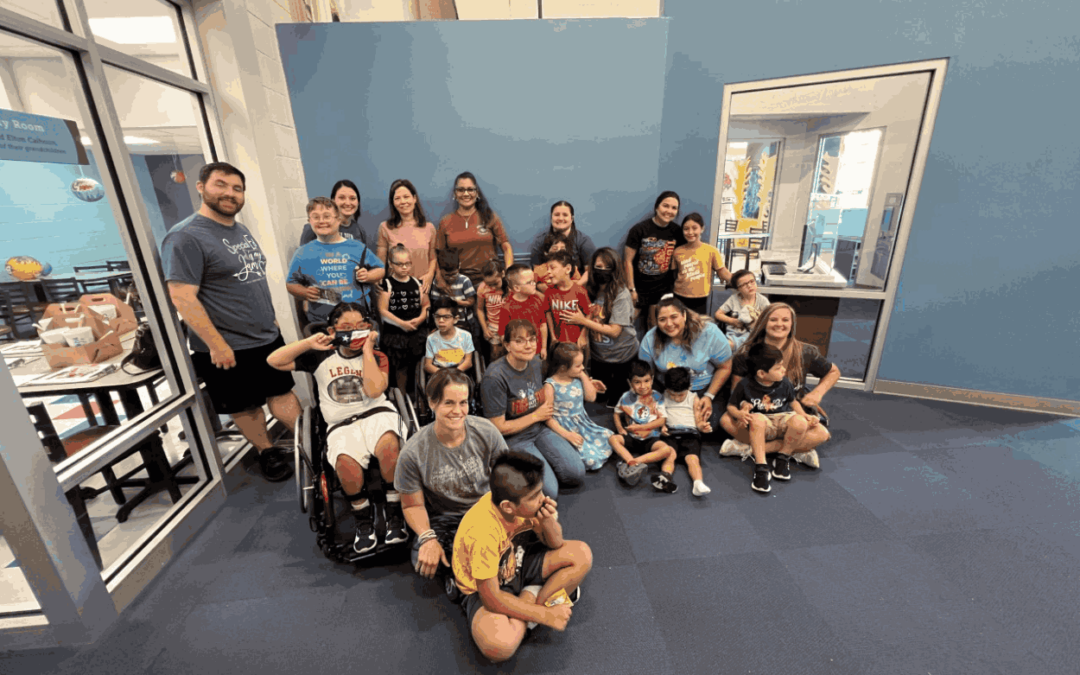By Robin Harkey
It wasn’t just another day at the Children’s Discovery Museum. It was more. Not a day but two weeks filled with new campers — and not just any campers, happy campers from VISD who may not otherwise have the opportunity or accommodations — those with severe and profound needs.
The project, “Camp Courageous,” which took place this past summer, was the brainchild of VISD’s lead speech-language pathologist, Jenny Anderson, made possible by a grant from the VISD Education Foundation for $4,962.
“No one in Victoria currently provides a camp for those with severe to profound speech impairments,” Anderson shared when asked why she wanted to offer the program.
Combining speech, occupational and physical therapy, she aimed to create a “fun, multisensory environment, with proprioceptive input -physical activity or deep pressure- to increase functional communication skills.”
The camp targeted specific competencies, including requesting objects or people, requesting repetition, protesting appropriately, and asking for help.
The key, however, for Anderson’s students was in the how-to — as each could use one or a combination of communication methods such as verbal gestures, sign language, or technological devices or accommodations, like the iPad with LAMP app, Accent 1000, or communication boards with PECS. These devices are a tremendous asset for Anderson and her team, as the “inability to express needs is a huge barrier for our students with speech impairments and can become a behavior issue,” Anderson added.
So, for five days a week and for three hours each day, approximately half of these early childhood through fifth-grade campers reaped the benefits of camp in an open setting, integrated with all children who visited the museum, while the other half attended the following week.
Daily students started with a yoga warm-up to promote body awareness and then shifted to four stations. Station one included a craft (fine motor skills, communication skills); station two sensory exploration; station three gross motor activities (jumping, climbing, pushing, pulling, lifting); and station four open play with a peer, therapist, or combination.
“The best part for me was the inclusivity of the camp and our students interacting with nondisabled peers,” said occupational therapist Amanda Kern. Another staffer, and speech-language pathologist, Charlsa Edge, had a similar experience. “When a student wanted to join in with the story and music time, she sat with their parents with other (neurotypical) children. The other children quickly warmed up and included her in the dance time. It was heart-warming to see her communicate with other children through play, smiles, and dancing while we practiced our verbal communication.”
All in all, the results were favorable, as 24 out of 27 students increased their communicative rating scores by one to two points. “By the end of the camp, one student was (even) able to decrease some of his (disruptive) behaviors after learning to communicate with the LAMP app. Also, seeing how proud his dad was when I explained how his son was requesting and protesting more appropriately was a special moment,” Katy Riedesel, speech-language pathologist, proudly shared.
Projects such as Anderson’s that prove a positive impact on our students are at the heart of our mission here at the VISD Education Foundation. We like knowing that our funding is indeed making a difference, and our donors do too.
So, thank you, Jenny, for having the vision to enter an open environment with a fresh take on summer camp.
You and your team saw some encouraging results in improved communication, behavior, and social connectivity built in an enriched play space with the kindness and inclusivity of our Crossroads area citizens.
While speaking may not come easy for those with severe and profound needs, you are making strides to make speech, learning, and social growth easier.
Now that’s something to talk about.

